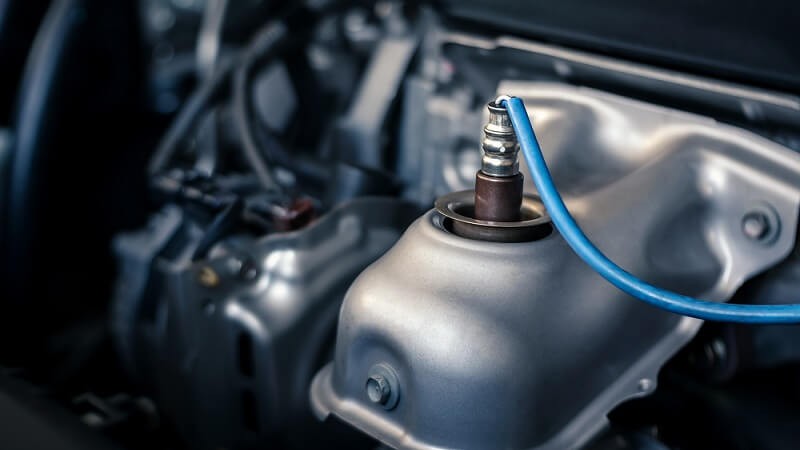The dreaded check engine light illuminates your dashboard. A quick scan reveals the trouble code: P0130 – Heated Oxygen Sensor Bank 1, Sensor 1 Circuit Malfunction. Now you need to locate the faulty sensor. This guide will explain what “Bank 1 Sensor 1” means and how to find it in your vehicle.
Understanding Bank 1 Sensor 1
“Bank 1 Sensor 1” refers to a specific oxygen sensor (O2 sensor) in your vehicle’s exhaust system. O2 sensors measure the oxygen content in the exhaust gases, allowing the Engine Control Unit (ECU) to adjust the air-fuel mixture for optimal combustion.
Bank 1: This designates the side of the engine containing cylinder number one. In inline engines (four or six cylinders), there’s only one bank. In V-shaped engines (V6, V8), Bank 1 is typically the side where cylinder one is located.
Sensor 1: This indicates the upstream oxygen sensor, positioned before the catalytic converter. It monitors the exhaust directly from the engine, providing real-time data to the ECU for air-fuel mixture adjustments. This differs from the downstream (Sensor 2) located after the catalytic converter, which monitors its efficiency.
Locating Bank 1 Sensor 1
Finding this sensor can be tricky. Here’s a step-by-step guide:
-
Safety First: Ensure the engine is cold to avoid burns. Disconnect the battery’s negative terminal.
-
Consult Your Manual: Your vehicle’s repair manual provides precise diagrams of sensor locations.
-
Identify Cylinder 1: Determine which side houses cylinder one. This information is in your manual.
-
Find the Exhaust Manifold: Bank 1 Sensor 1 is located on the exhaust manifold for that bank, or in the exhaust pipe just before the catalytic converter.
-
Trace the Exhaust: Follow the exhaust manifold from the engine block towards the catalytic converter. The first O2 sensor you encounter is typically Bank 1 Sensor 1. It will have wires connected to it.
Common Symptoms of a Faulty Bank 1 Sensor 1
- Illuminated Check Engine Light: Often accompanied by the P0130 trouble code (or related codes like P0131, P0132, etc.).
- Decreased Fuel Economy: A malfunctioning sensor can lead to a richer air-fuel mixture, wasting fuel.
- Rough Idling or Stalling: Inaccurate readings can disrupt the engine’s idle stability.
- Reduced Engine Performance: Hesitation, misfires, or lack of power during acceleration can occur.
- Increased Emissions: A faulty sensor can hinder the catalytic converter’s performance, leading to higher emissions.
Replacing Bank 1 Sensor 1
While diagnosing the issue requires specialized tools like a multimeter or OBD-II scanner, replacing the sensor is often a DIY-friendly task. You’ll need tools like an oxygen sensor socket, penetrating oil, and a torque wrench. Always consult your repair manual for specific instructions and torque specifications.
Maintaining Your Oxygen Sensors
- Use quality fuel.
- Adhere to recommended maintenance schedules.
- Avoid frequent short trips.
- Address engine issues promptly.
A properly functioning Bank 1 Sensor 1 is crucial for engine performance, fuel efficiency, and emissions control. Understanding its location and function empowers you to address potential issues effectively.


